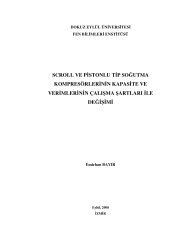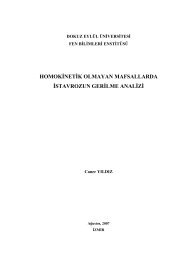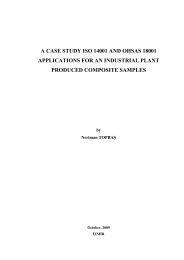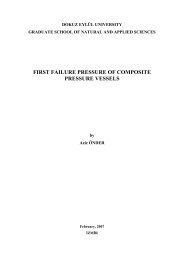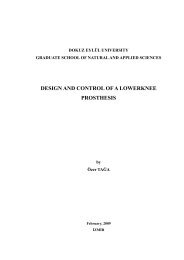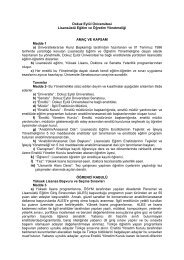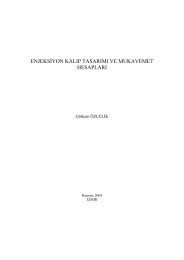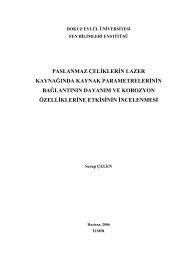A numerical study on the thermal expansion coefficients of fiber
A numerical study on the thermal expansion coefficients of fiber
A numerical study on the thermal expansion coefficients of fiber
Create successful ePaper yourself
Turn your PDF publications into a flip-book with our unique Google optimized e-Paper software.
51<br />
Figure 4.1 Examples <strong>of</strong> finite elements (Trantina, & Nimmer, 1994).<br />
4.2.3 Boundary and Loading C<strong>on</strong>diti<strong>on</strong>s<br />
Applying boundary c<strong>on</strong>diti<strong>on</strong>s and <strong>the</strong> proper loading <strong>on</strong> a structure appear as a<br />
very important part <strong>of</strong> <strong>the</strong> finite element soluti<strong>on</strong>. For static problems, <strong>the</strong> stiffness<br />
matrix associated with <strong>the</strong> linear equati<strong>on</strong>s <strong>of</strong> equilibrium for <strong>the</strong> complete structure<br />
will be singular, unless all rigid body moti<strong>on</strong> is prohibited. As a result, a fundamental<br />
requirement for soluti<strong>on</strong> <strong>of</strong> <strong>the</strong> linear equati<strong>on</strong>s governing a problem is that <strong>the</strong><br />
structure must be prevented from freely translating or rotating in space. Rigid body<br />
moti<strong>on</strong> is eliminated through <strong>the</strong> applicati<strong>on</strong> <strong>of</strong> boundary c<strong>on</strong>diti<strong>on</strong>s requiring zero



